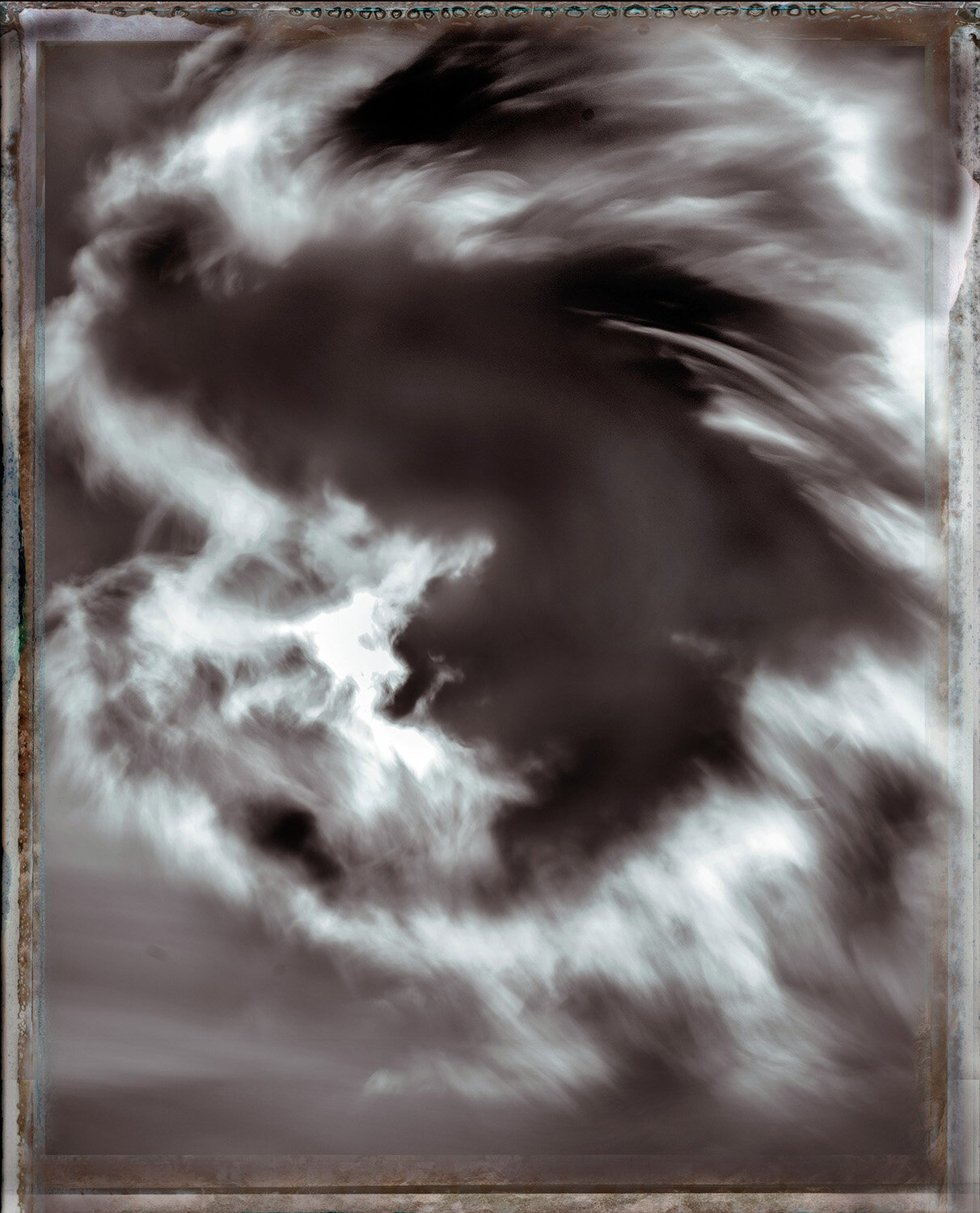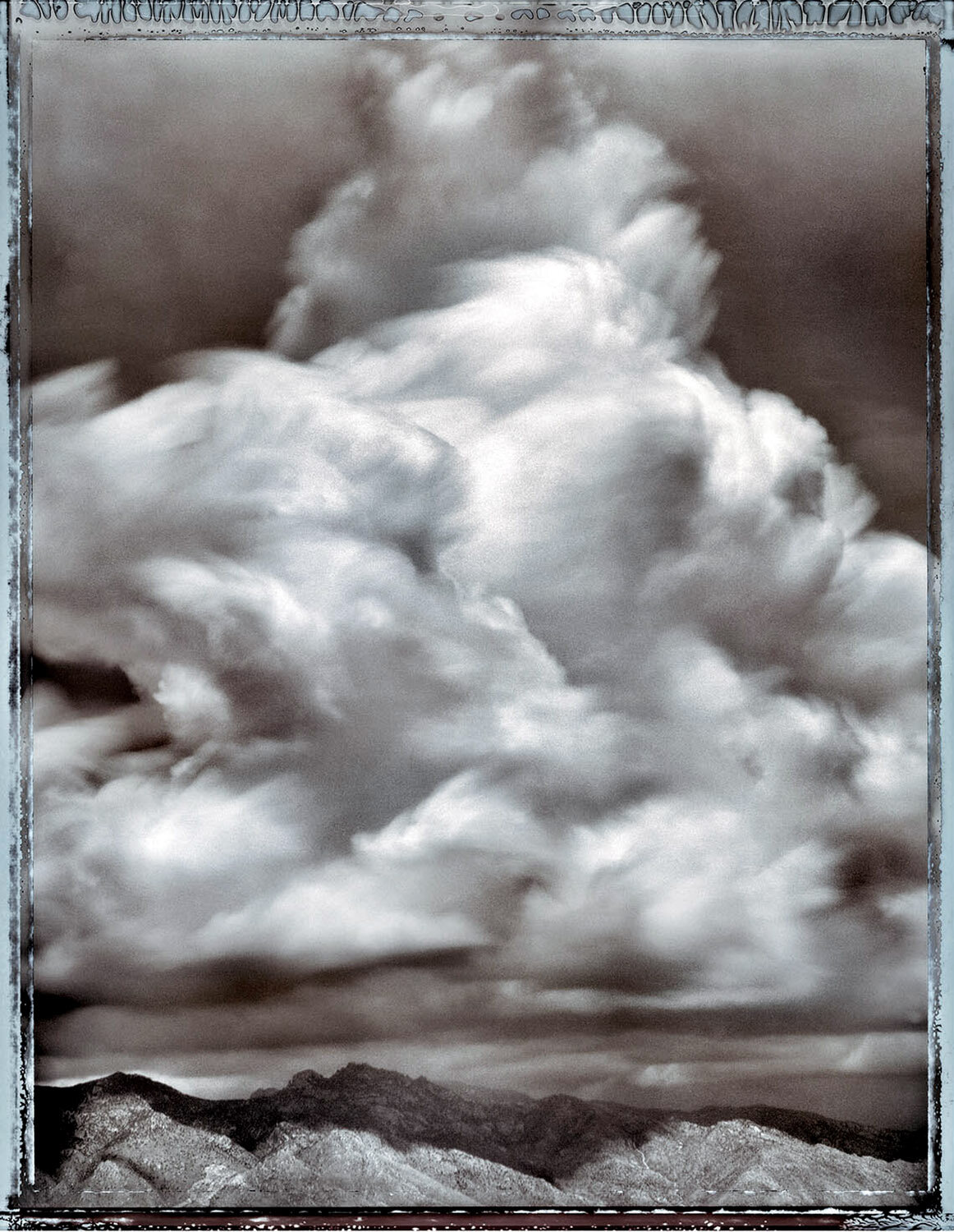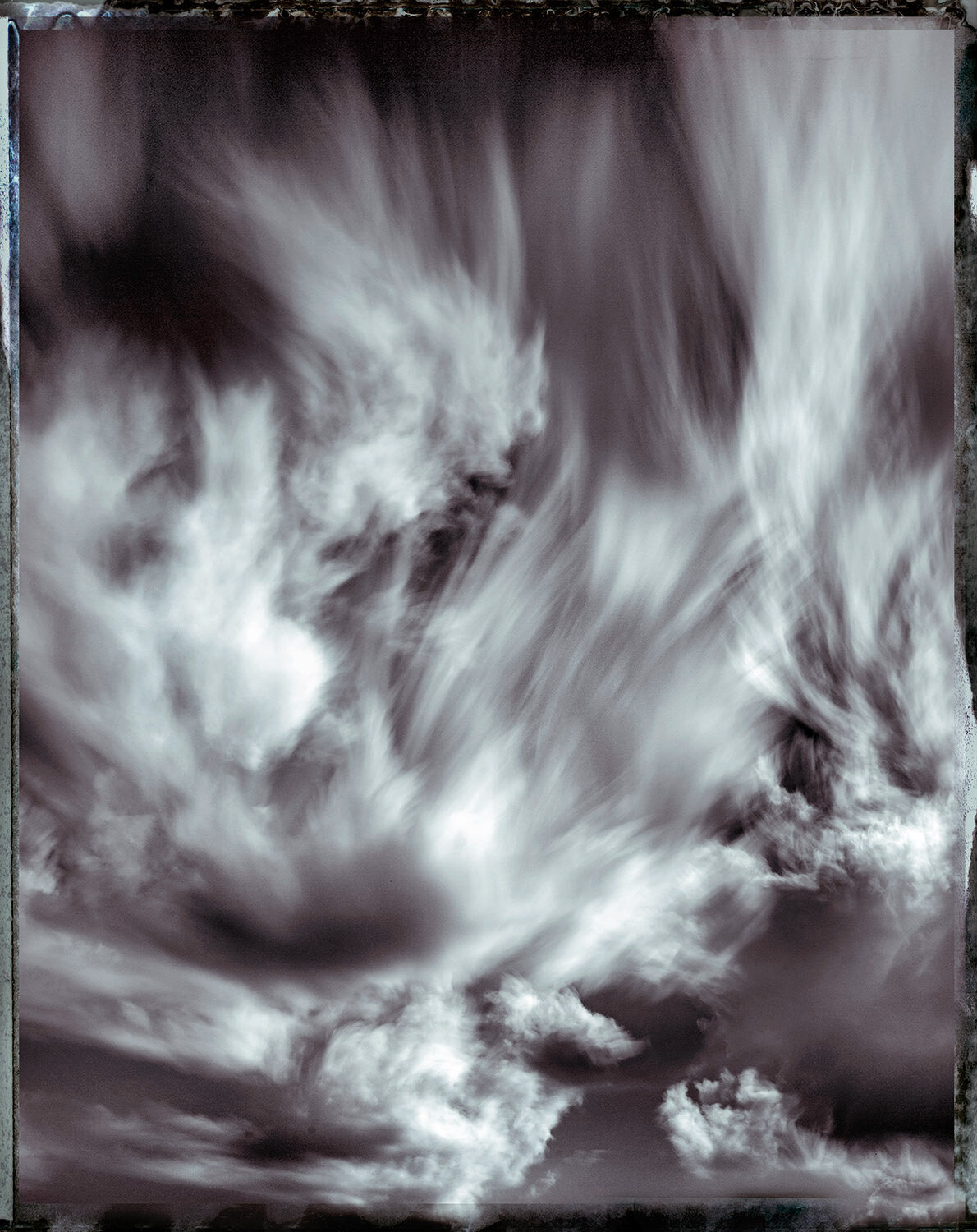William Lesch
WILLIAM LESCH
Force and Quietude in an Otherworldly Landscape
by James SchaubChief Curator Tohono Chul GalleryTohono Chul Park, Tucson, AZLate 1993, I walk into the Scottsdale Civic Center Library for the first time. A few feet inside, up high on the wall is a poster with an image of a glowing Blue Saguaro. It grabs me right away and holds me there. The saguaro is electric and following its lead, every other element in the image – including the sky, is reflecting, absorbing, or emitting an odd spiritual aura. Jupiter, falling to the right of the saguaro, hints at the passage of time, yet the time of day in indeterminable. The image is beautifully composed; it is mysterious, mystical, and painterly. Despite how active the jarring incandescent light renders the scene, it also, strangely enough, imparts an engaging serenity I want to bask in - maybe even taking the place of the saguaro, front and center in that timeless welcoming otherworldly landscape. I spend a fair amount of time, standing there, looking at it. I know that because, as I turn away, the librarian kindly confirms my interest, telling me – “It does the same thing to me - pretty wonderful! Isn’t it? His book is right over there.” I am directed to the stacks where I find the book William Lesch. EXPANSIONS – (the image: Blue Saguaro and Jupiter (1988) printed on the poster graces its cover). I spend my lunch hour looking over the book, I get a library card. The book stays with me for the next month, the image stays with me for the next 27 years, still counting.
Blue Saguaro and Jupiter, Alamo Canyon, AZ
Heart of Saguaro, Blue
That image, that poster, did some very important things. It introduced me to the work of Tucson based artist William Lesch. I have followed his work ever since; looking forward and getting excited anytime his work is exhibited. The poster - marked “Tucson Art Expo ’89 . Tucson/Pima Arts Council,” - encouraged me, new to Arizona, to go to south and see what was going on. I loved what I found in Tucson – the art, the people, the landscape. It is without a doubt one of the most beautiful places I have ever been - it is and has been home for almost 25 years.
For the past 45 years Tucson and Lesch have grown together. I can’t imagine that there is anyone around Tucson that knows, understands, and appreciates Tucson’s beauty better than Lesch. Calling Tucson home since the mid-seventies, the place has been a major factor in the development of Lesch’s distinctive aesthetic and skill set. An encyclopedic knowledge of photography - its history, science, techniques, and processes - pushes him through every trailblazing twist in turn he creates - on purpose or by accident. For the past five years, it has been my great fortune to get to know him personally, working with him on numerous projects at Tohono Chul. With each project, I know him better as a person and as an artist; I am better because of it. I am always interested in seeing what he is making, hearing him speak, reading his words, and thinking about his work - his energy and enthusiasm have no limit. He is into it, in total, he misses nothing. Lesch is never idle, he is always moving, shifting gears; exploring new materials, ideas, techniques, equipment, technology, and subjects.
Old Saguaro, Gates Pass
The photograph Blue Saguaro and Jupiter, and the series it was part of, garnered Lesch heaps of praise. That body of work saw him ‘painting with light.’ Those images were created in camera, over long periods of time – exposure on top of exposure; with Lesch moving through the desert night, illuminating elements of the landscape with lights covered with colored gels, all of it burned into film as he left the camera open. He had a good run of it with that series and then, like all great artists, he ran into other subjects, concepts, techniques.
Technology also forced his hand. The equipment and processes employed in photography have changed dramatically over the past two and a half decades, changes that proved difficult at first for those beholden to old-world processes. But, instead of resisting the replacement of his classic equipment and processes, Lesch embraced the advancements and possibilities the new digital equipment and programs offered. He dove in deep.
Redwall Cavern Panorama, Grand Canyon, paper print mounted on patinated steel panel, 36” x 60”
The transition to the digital realm probably did not affect Lesch the same as it did other photographers because Lesch is never really ‘taking’ a picture – he is ‘MAKING’ an image, creating something that has an otherness to it in terms of concept and intent and an objectness to it in terms of its presence and physicality, whether it be printed on paper or on a distressed and patinated sheet of copper.
Barrel Cactus Cross Section, direct printed on painted and patinated aluminum panel, 24” x 24”
The time lapse images that Lesch has been making of the monsoon lightning and thunder storms in and around Tucson are some of the most dynamic still images I have seen of our powerful Monsoon Summer. It is all there: The ominous hush, the roiling clouds, the lightning crackling and tearing through the sky, the low rumble of a distant thunder, the whirling wind of a nearing maelstrom, the exploding tempest flooding into the valley. Setting up on a fixed position, Lesch lets the action come to him – capturing epic storms beginning to end, image after image after image laid upon each other, coalescing under his direction and shaped into a moment, only existing as created by him.
16 Pieces, Movements for Lightstorm Montage
The Score, in layered form, less adjustments, for Lightstorm Timescape Montage
To make these images he uses equipment and processes that were not even in existence when he was ‘painting with light.’ According to Lesch, they could not be ‘made’ without the digital equipment and programs he is currently mastering. Lesch’s vision, adaptation, and conviction in the creation of his art is beyond impressive – it is truly amazing.
In his person and in his work you will find force and quietude in perfect balance; Lesch’s love of nature and his passion for what he does and how he does it are omnipresent. He understands his work, why he makes it, and what it means in great depth – and is able to relay that not only through his images, but also with his words. It is at the confluence of Lesch’s work and words that his brilliance shines. He articulates his thoughts in such a fluid, expansive, heartfelt, eloquent, and intelligent manner that no words other than his can truly stick.
Lightstorm over Tucson, Six Hour Day and Night Timescape Montage, View from A-Mountain
William Lesch Artist Statement, Violet Sky Exhibit
“The world does not fit neatly into the frame of a single instant, a sixtieth of a second. It is constantly changing, a living thing of which we are but a fleeting part.
I love the breathing wind, flowing water, moving light--the flux of creation. I want to make photographs not of the decisive moment, but of the eternal present. The writer Annie Dillard wrote that “Light has force. The secret to seeing is to sail on solar wind. Hone and spread your spirit till you yourself are a sail, whetted, translucent, broadside to the merest puff.”
I have honed my vision observing the overlapping cycles of this world. I look for the seams, the chinks in the wall of what we think the world looks like. It is in those seams where sight happens, where the world of the ten thousand things, all of which we can name, dissolves into the world we could see before we knew the names.
In that world we could see the symphony of light and movement in which we live, and see music dancing on falling motes of dust flashing in the sun”
Twenty Minute Time Exposures of Stormclouds building in the Sonoran Desert shot on discontinued, now obsolete 4x5 Type 55 Positive/Negative Polaroid Film
STORMCLOUDS: LIFEBLOOD OF THE DESERT - William Lesch Artist Statement, Monsoon Exhibit
“The summer sky transforms itself from the featureless white-hot blue of June to the twisting, dark energy of July thunderstorms. Native American dwellers of Arizona had elaborate rituals to bring the summer rains for the life-giving waters. I, too, honor the summer rains through ritual photographic homage of the clouds--connecting earth and sky. My philosophy is that the earth and sky are alive. Many cultures and religions found their gods in the skies. Clouds are the spirit of the earth given form. Their cycle of life, forming from nothing and streaming across the sky is indicative of the circulation of the blood of the planet.
I am interested in their movement and flow, in photographing their life force. I open the shutter and the clouds draw themselves, over time. The results continually surprise me. I never know what to expect from a cloud, and for that I give thanks. It is that sense of mystery, of the unknown, that keeps me working”








